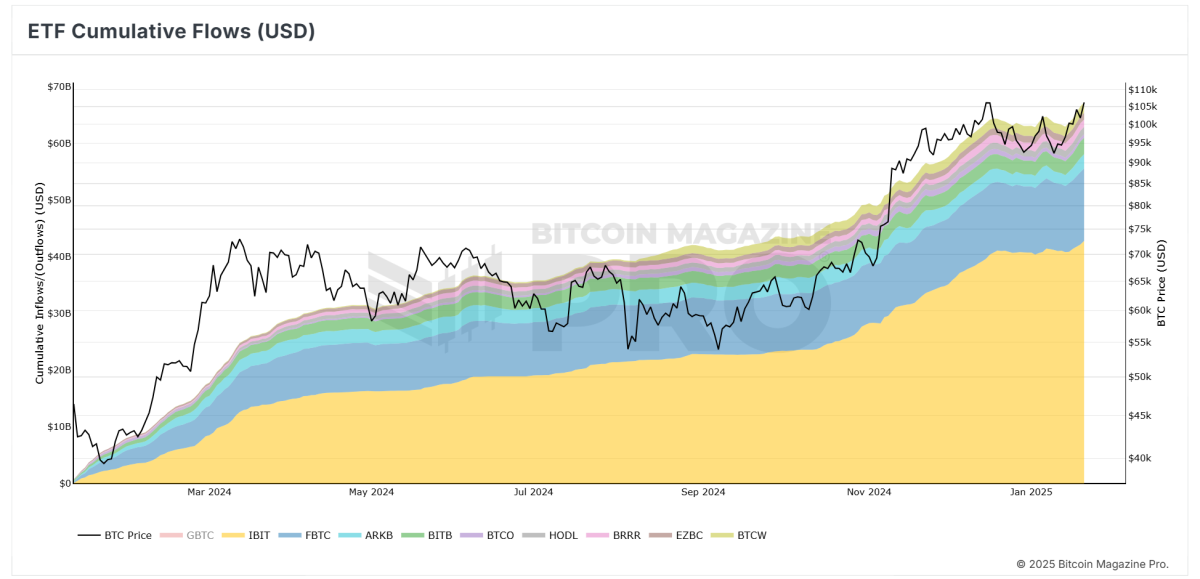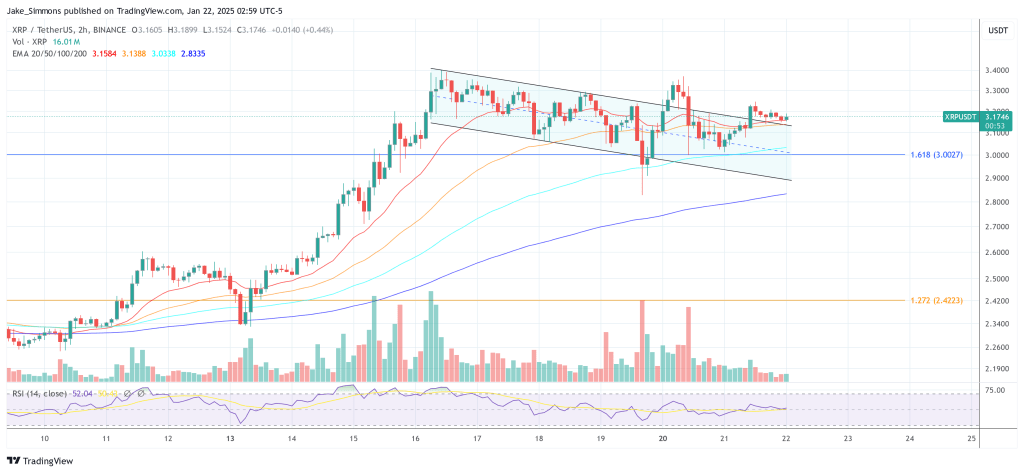 | TLDR: Bitcoin mining currently uses ~0.1% of global energy consumption. Due to its competitive nature and unique properties, bitcoin mining leads to miners setting up or relocating its operations in areas with the cheapest sources of energy. This enables miners to use energy sources that have low demand, are off-grid, and/or would typically be wasted. Lastly, partnerships between energy producers and bitcoin miners provide an opportunity to enhance energy infrastructure and make otherwise unprofitable renewable energy investments profitable. This is further influenced by national and global energy consumption targets. Note: The objective of this article is to summarize the content from 10+ sources. If anyone asks you about bitcoin energy consumption, I hope this will be a great resource to reference. I highly recommend reviewing the sources below to dig deeper into the bitcoin mining energy consumption rabbit hole! Introduction Bitcoin mining has been accused of consuming a substantial amount of energy, typically comparing bitcoin mining energy consumption with that of countries or large companies. Because of its large consumption of energy, bitcoin mining drives up electricity prices for consumers, requires a large carbon footprint, and is causing environmental issues within communities (e.g. heating Seneca Lake in New York). If bitcoin continues to survive, energy consumption will continue to increase, which could be a threat to global warming. And what’s the point of bitcoin anyway? Its energy use per transaction is through the roof and is, therefore, a waste! In this article, I will provide context to the claims mentioned above in order to illustrate that critics are misinformed about bitcoin mining and are not considering the potential long term benefits to energy infrastructure and the environment. Global Energy In 2019, the world produced 173,000 TWh (terawatt hours) of energy. It is estimated that about 33% of global energy was wasted during that time. Meanwhile, bitcoin mining consumed about 120-140 TWh.A, B Bitcoin mining consumes a very small amount of global energy. Energy Consumption Comparisons Bitcoin consumes more energy than many countries consume, including Ukraine and Norway.C This statement sounds outrageous - how can bitcoin consume so much energy!? It is deceiving to compare bitcoin mining energy consumption to that of other countries without putting this into perspective. Large online platforms such as Google, Netflix, Facebook, and Amazon all use more energy than countries use. More surprisingly, the cruise industry, Christmas lights, household drying machines, and private jets use more energy than countries use.B Gold mining requires 131 TWh of energy.D For additional context, more comparisons can be viewed in the two charts below. Source: Cambridge Bitcoin Electricity Consumption IndexC Source: Nic Carter, Demystifying BitcoinE Bitcoin mining consumes more energy than some countries consume; however, without providing context, critics downplay the fact that many other appliances, seasonal traditions, industries, and companies also consume more energy than these countries consume. Electricity Prices Bitcoin mining is highly competitive, which drives miners to search for the cheapest electricity. Profitable miners require much cheaper energy than the global average (~14 cents/KWh), ideally 5 cents/KWh or less.A Cheap energy is only found in locations where there are no (or very low) opportunity costs and no (or very low) buyers. Bitcoin mining has unique propertiesF that enable miners to find this cheap energy:
Energy produced from oil, coal, and gas is not likely to be the target energy source of bitcoin miners due to the high opportunity cost of each of these resources. On the other hand, excess nuclear, hydroelectric, natural gas flaring, and other wasted energies have low opportunity costs.A
At face value, solar and wind energies lack the consistency needed to mine bitcoin profitably; however, there are solutions that provide a symbiotic relationship between bitcoin mining and these energies in the short term (this will be discussed below). Note: Bitcoin mining results in increased capital investment being dedicated to infrastructure that produces cheap electricity (due to its financial reward).A The repurposed coal plant mentioned above has received criticism from environmentalists that bitcoin mining has caused Lake Seneca to overheat. This is a one-off scenario in which bitcoin mining may be the main factor that led to the reopening and repurposing of a plant that is negatively impacting the local ecosystem. Bitcoin mining goes to where the cheap energy is. This is an opportunity for policy makers to craft legislation to protect local ecosystems. This is not and will not be the last time an old plant is reopened or repurposed. “Imagine a 3D topographic map of the world with cheap energy hotspots being lower and expensive energy being higher. I imagine Bitcoin mining being akin to a glass of water poured over the surface, settling in the nooks and crannies, and smoothing it out.” Nic Carter Threat to Global Warming As stated in the sections above, bitcoin mining’s unique properties enable miners to find cheap energy sources that have a lower carbon footprint, would have been wasted, or provide a net benefit to reducing methane emissions. Solar and wind energies provide an unconventional opportunity for energy producers and miners. Initially, I was skeptical about solar and wind energies since they are not consistent sources of energy throughout the day or seasons. For these renewable energies to provide sufficient, consistent energy to consumers, energy providers need to overbuild solar and wind farms so that the minimum energy produced is able to supply consumers without blackouts. This is incredibly expensive because solar and wind farms do not have a buyer for the oversupply of energy during peak hours, and batteries are costly. California and Texas have been in the news recently because their reliance on renewable energy caused blackouts.I In the past, neither of these states had recurring blackouts; however, their overreliance on renewable energy has created a systemic energy supply issue. Some of the solutions discussed are listed below:
Option 3 (or 4) has the potential to be cheaper and more feasible with the help of bitcoin mining. The timing of the construction of solar and wind farms and supporting grid infrastructure are not always aligned. If solar and wind farms are built but do not have sufficient transmission line infrastructure, bitcoin miners can buy the farms’ electricity.J, B This is a symbiotic relationship that provides revenue to the solar and wind farms and provides otherwise wasted electricity to bitcoin miners. Currently West Texas produces 32 GW of solar and wind energy, has a 5 GW load, and can transmit 12 GW of energy to laid centers outside of West Texas.H The outstanding energy is curtailed but could be a perfect energy source for bitcoin miners that increases revenue of the renewable energy farms. Once solar and wind farms are constructed and have the supporting infrastructure to provide its energy supply to the grid, bitcoin mining can use its flexible load property to power down, as needed, in the case of an energy shortage.H Critics rightfully claim that bitcoin mining is only profitable if the mining hardware runs everyday; however, innovative contracts between energy supplier and miners have terms that exchange powering down temporarily for a rebate. Reducing energy demand within seconds is much easier and faster for grid operators than deploying ‘peaker plants’ (typically natural gas) to increase energy supply. This ‘controllable load’ assists with decarbonizing the grid and is in line with the International Energy Agency’s 2030 goal of dedicating 500 GW electricity to new demand response resources in an attempt to meet renewable energy goals and modernize the grid.G Even with a rebate built into a contract between a miner and energy producer, there is still skepticism about whether miners would use this energy over other cheap energy sources since there is a risk the rebate does not cover the costs of powering down. This skepticism assumes all mining hardware is equal; however, this is hardly the case. Although new miners will use on-grid, cheap energy with high uptime (e.g. nuclear, hydroelectric), older mining hardware needs to use the cheapest power, which can be found in intermittent renewables. In 2021, Bitmain S9’s were 5 years old yet represented 30% of the mining network. Another consideration is that ASIC development cycles are slowing, which allows miners to search for cheap energy rather than periodically upgrading their hardware.H Stranded power is an issue that not only occurs with overbuilding renewable energy but also when power plants are built in anticipation of users in a community (e.g. hospital, office). If the building plans fall through, there is an overabundance of energy in that community. Also, stranded power is a large problem in developing countries. This is an opportunity for developing countries to invest capital in energy resources and modernize their infrastructure.B In summary, bitcoin mining’s competitive search for cheap energy enables renewable energy to be more profitable (waste less energy),H provides a quick-reacting demand response resource (resilient grid), reduces construction risk and grid congestion,K and allocates more capital to cheap energy. All of these factors will help modernize the grid, encourage investment in renewables (including fusion),L and increase the innovation and advancement in renewables. More optimistic claims argue that the marginal cost of producing electricity may approach zero, and bitcoin mining could move us to a Type I civilization on the Kardashev scale (current estimate is 100-200 years from today).B, L A Type I civilization is defined as a civilization that “can use and store all of the energy available on its planet.”O Although it is difficult to measure bitcoin mining’s global carbon footprint,M the Bitcoin Mining Council provides transparency for 36 companies that represent 46% of the mining network. A summary can be found below: Primary Energy Sustainable Power Mix: Bitcoin Mining vs Other Countries (% of TWh), BMC CouncilO Furthermore, it has been estimated that carbon emissions are on pace to be net zero or negative by 2031.D Bitcoin mining will subsidize renewable energy and strengthen and modernize grids, which will enable the world to achieve its climate goals. Payments Comparisons Proof of work (PoW) critics like to compare bitcoin transaction volume with other established payments networks like Visa. This data can be extrapolated to say bitcoin transactions consume X% energy whereas Visa transactions only consume Y% of energy. Alex De Vries (former PwC Netherlands) is notorious for bashing bitcoin and PoW for being incredibly energy intensive per transaction and per block.B However, this is not a fair comparison of assessing energy consumption for bitcoin for the following reasons:
Over time, bitcoin mining’s energy consumption increases at a slower rate than the increase in the total value secured by the system.L It is estimated that if bitcoin’s price increased to $1 million per bitcoin, bitcoin would still only use 0.6% of the world’s energy consumption. With this high valuation, bitcoin may have absorbed energy usually consumed from parts of the global banking system.B At a high level, bitcoin’s energy consumption is capped; when the bitcoin price increases, energy consumption increases; however, every four years, the block reward is halved, which reduces energy consumption. The other part of the block reward (transaction fees) is limited by the threshold in which users would be unwilling to pay the fees.M Bitcoin energy consumption should not be compared to that of a payments layer (e.g. Visa); the energy consumption is used for bitcoin’s financial infrastructure that includes a settlement layer, payments layer(s), currency creation, incentives, and infrastructure security / immutability. Sources: A The Fiat Standard B Bitcoin’s Energy Usage Isn’t a Problem. Here’s Why C Cambridge Bitcoin Electricity Consumption Index D The green case for Bitcoin E Demystifying Bitcoin F MINERS ARE THE OPTIMAL BUYERS: THE DATA BEHIND BITCOIN-LED DECARBONIZATION IN TEXAS G Bitcoin Mining Is America's Most Misunderstood Industry | Opinion H Bitcoin Mining Is Reshaping the Energy Sector and No One Is Talking About It I blackouts J Solar + Battery + Bitcoin Mining K Bitcoin is Key to an Abundant, Clean Energy Future L PoW is Efficient M How Much Energy Does Bitcoin Actually Consume? N Kardashev scale O BMC (Bitcoin Mining Council) Bitcoin (PoW) Mining Energy Consumption [link] [comments] |

You can get bonuses upto $100 FREE BONUS when you:
💰 Install these recommended apps:
💲 SocialGood - 100% Crypto Back on Everyday Shopping
💲 xPortal - The DeFi For The Next Billion
💲 CryptoTab Browser - Lightweight, fast, and ready to mine!
💰 Register on these recommended exchanges:
🟡 Binance🟡 Bitfinex🟡 Bitmart🟡 Bittrex🟡 Bitget
🟡 CoinEx🟡 Crypto.com🟡 Gate.io🟡 Huobi🟡 Kucoin.




















Comments